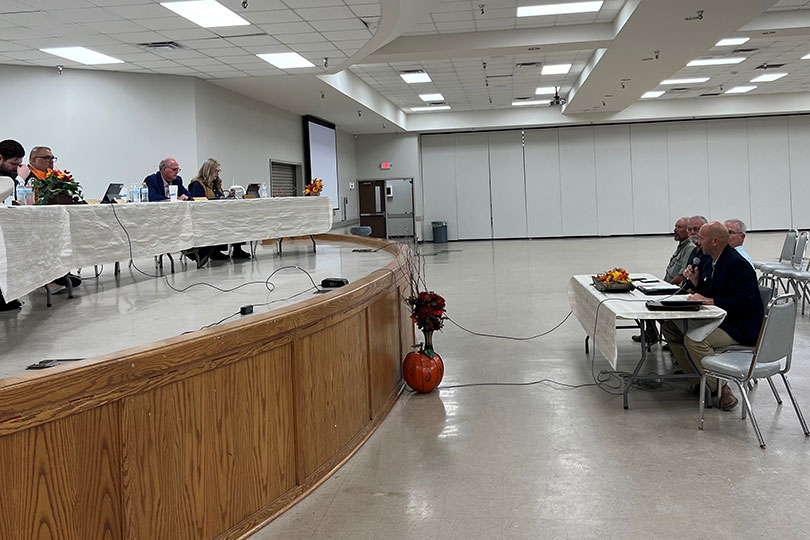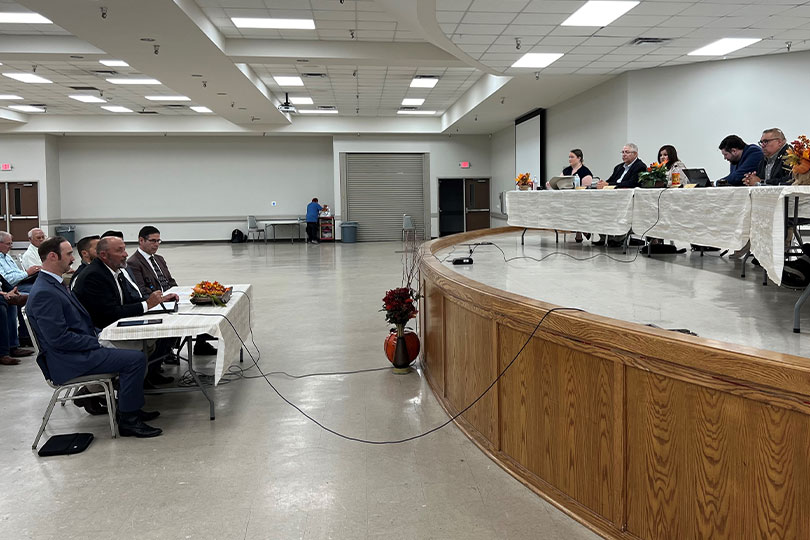By Julie Tomascik
Editor
Texas farmers and ranchers shared concerns about two invasive pests threatening livestock and rice during a Texas House Agriculture & Livestock Committee interim hearing in El Campo on Oct. 6.
Texas Farm Bureau (TFB) District 3 State Director Dr. Greg Buenger, a retired veterinarian and rancher, told lawmakers the New World screwworm’s reemergence just 70 miles south of the Texas-Mexico border is cause for concern.
“While no screwworms have been detected within Texas borders yet, the proximity of recent cases and the pest’s devasting potential demand vigilance,” Buenger said.
He commended the Texas Animal Health Commission for leading surveillance, outreach efforts and or working closely with veterinarians, livestock producers and wildlife managers to monitor for signs of infestation. He also recognized the Texas Parks and Wildlife Department for focusing on impacts to native wildlife populations.
Buenger said that, in addition to supporting these agencies, access to approved pharmaceutical treatments or topical medications will be critical to minimize the damage from this pest.
“These must be approved by the U.S. Food and Drug Administration,” he said. “We are pleased the agency has provided emergency use authorization for some drugs, but others need to be evaluated for efficacy, as well.”
Buenger noted uncertainty around the U.S. Department of Agriculture’s (USDA) plan to build a sterile fly production facility in the Rio Grande Valley that would release up to 300 million sterile flies weekly.
“Unfortunately, we have not heard from USDA on the status of this plan,” he said. “In addition to the sterile fly facility, investments such as specimen kits, livestock medicine development and fly sterilization techniques are needed to ensure a broad approach to preparing a response to infestation.”
Containing the pest, he added, is a matter of national biosecurity. He cited a 1976 outbreak that cost Texas more than $330 million. USDA estimates a similar event today could exceed $1.8 billion in state losses.
Wharton County rice farmer Timothy Gerston testified that another pest—the rice delphacid—is adding to farmers’ burdens.
“The past few years have been challenging for farmers due to rising input costs and declining commodity prices,” he said. “Additionally, we’ve experienced yield losses that have further compounded these difficulties because of the rice delphacid.”
Gerston explained the pest damages rice plants by feeding on their sap and spreading the Rice Hoja Blanca Virus, which severely reduces tillering and plant height, often leading to plant death.
He said the insect was more widespread this year than in any previous year since its initial detection in 2015.
Insecticides are being used to control the pest, but their effectiveness is limited, providing only short-term control and requiring repeated applications. Gerston said farmers appreciate the Texas Department of Agriculture’s emergency exemption allowing Endigo ZCX use to combat the pest but warned that the exemption granted in 2022 is set to expire this year.
Texas rice farmers need all avenues of research and other management practices to be considered in fighting the rice delphacid and other emerging pests.
Both Buenger and Gerston urged state lawmakers to continue support for science-based, coordinated responses that protect Texas farmers, ranchers and rural communities from costly pest threats.



Leave A Comment